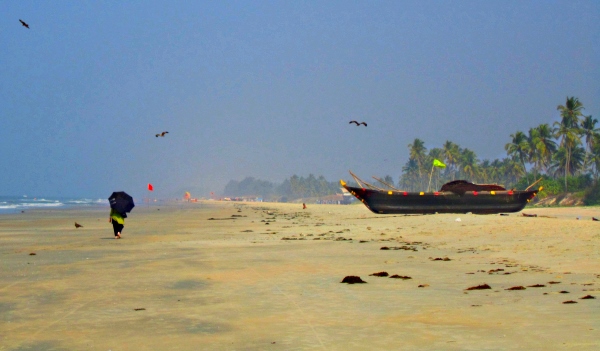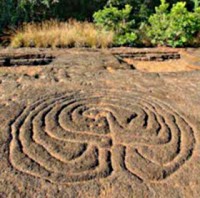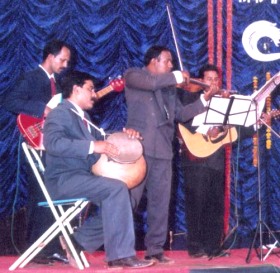What makes Goa so special

What’s so special about Goa? Well, going by what some tourist brochures seem to suggest and consequently what tourists sometimes think, unlike the rest of India, Goa is a beach bum paradise, a place for beach parties, booze, and bikini babes. What crap! That’s like ogling at a small part of a painting with a magnifying glass and then describing all of it without actually looking at the whole picture. Yes, Goa certainly is a fun place, a place where you’re free to be just like you want to be. But it is so much more than just a good-times getaway, and it would not only be unfair, it would be stupid to pare down her appeal to just this.
Let’s look at another explanation – the oft-repeated platitude that Goa is not just a state, it’s a state of mind. Too vague, too abstract, don’t you think? So let’s dump both the philosophical and the blinkered stuff, and consider the tangibles. Let’s really get to know Goa, and understand why Goa is Goa.
The unique sossegado ambience
 There are many reasons to holler “Viva Goa!“, but I have to start with this one. Because for me, Goa has always been a place for total relaxation. You can actually enjoy spending time here doing nothing, just relaxing, feasting on the tastiest sea food in the world, sipping on Bacardi rum, or beer, or feni, or if you’re like me… on port wine on your breezy balcao with swaying palms and the soft whispering of bamboo groves providing the background music. Here’s where you can experience the feeling of being at peace with yourself… at peace with the whole world, and then enjoy a restful, peaceful sleep at the end of the day, the only sound disturbing the silence of the night – the gentle rustling of leaves in the breeze…
There are many reasons to holler “Viva Goa!“, but I have to start with this one. Because for me, Goa has always been a place for total relaxation. You can actually enjoy spending time here doing nothing, just relaxing, feasting on the tastiest sea food in the world, sipping on Bacardi rum, or beer, or feni, or if you’re like me… on port wine on your breezy balcao with swaying palms and the soft whispering of bamboo groves providing the background music. Here’s where you can experience the feeling of being at peace with yourself… at peace with the whole world, and then enjoy a restful, peaceful sleep at the end of the day, the only sound disturbing the silence of the night – the gentle rustling of leaves in the breeze…
Oooh! The ecstasy of a holiday in Goa! I’m recklessly going overboard with the exclamation marks, I know. But Goa does that to you. I just love the Mediterranean feel of the place, the refreshing resort-like ambience, the languid pace… The moment I land in my home state, my heart does a little leap, and before I know it, the disconnect from the noise and chaos of Bombay, aka Mumbai, is complete. For those who keep returning here, Goa is not a let-it-all-hang-out destination, it’s the best place to refresh mind, body and soul. And that’s not the same thing.
A long history and a vibrant culture mix
Nowadays they’re mixing everything. There’s fusion music, fusion architecture, fusion yoga. We even have Chili Chocolate, and Idli Manchurian. And while the Brits are drooling over everything Anglo-Indian, now Korean Tacos are a big hit in the US. Well, when it comes to the fine art of mixing things up, Goa is ahead of the game by an impossible margin. By centuries.
 Let me begin with some interesting snapshots of the past. Recently, pre-historic petroglyphs (rock carvings) including an intriguing labyrinth petroglyph were discovered in Usgalimol (also called Pansaimol), not far from Rivona in South Goa. These engravings point to human settlements here around 2500 BC or earlier.
Let me begin with some interesting snapshots of the past. Recently, pre-historic petroglyphs (rock carvings) including an intriguing labyrinth petroglyph were discovered in Usgalimol (also called Pansaimol), not far from Rivona in South Goa. These engravings point to human settlements here around 2500 BC or earlier.
But despite the long history, the first historical reference to Goa is believed to date back to around the 3rd century BC when it was part of the Maurya Empire. That was when it was called Sunaparant (Golden Land). However, what we call Goa today is the land that was held together under Portuguese rule from around 1510 till 1961 (after which it was annexed into the Indian Union). In the past, different sections of today’s Goa were parts of different kingdoms.
A thriving port for centuries, Goa was ruled by Hindu, Jain and Muslim dynasties before the Portuguese arrived here. It was also a fabled destination and a major trade centre visited by merchants and others from Arabia, Turkey, Zanzibar and other places. As far back as the 1600s, today’s Old Goa was one of the world’s well-known cities and a leading commercial centre in the East. And it was so beautiful, there used to be an old Portuguese proverb: Quem viu Goa, escusa de ver Lisboa! (He who has seen Goa need not see Lisbon.) Just imagine, Goa was compared to Lisbon at a time when the latter was one of the most beautiful cities in Europe!
 People of different races and nationalities having visited, lived, and even settled here, some for centuries like the Portuguese, cosmopolitanism, multiculturalism, and even inter-breeding specially during the Portuguese era, are all a reality of Goa’s past. And the evidence is all around us till today. We can see the influence of multiple cultures on almost everything Goan from art and architecture to the language we speak and the food we eat. Even our churches and temples are hybrids, exhibiting a mix of Hindu, Muslim, and Portuguese architecture. The Goan mando, our sublime musical creation, and the tiatr, our uniquely Goan form of theatre, are both products of our bi-cultural East-West heritage.
People of different races and nationalities having visited, lived, and even settled here, some for centuries like the Portuguese, cosmopolitanism, multiculturalism, and even inter-breeding specially during the Portuguese era, are all a reality of Goa’s past. And the evidence is all around us till today. We can see the influence of multiple cultures on almost everything Goan from art and architecture to the language we speak and the food we eat. Even our churches and temples are hybrids, exhibiting a mix of Hindu, Muslim, and Portuguese architecture. The Goan mando, our sublime musical creation, and the tiatr, our uniquely Goan form of theatre, are both products of our bi-cultural East-West heritage.
Though a part of India, Goa doesn’t quite feel or look like the rest of the country. That’s because it was a sequestered territory under foreign rule longer than any other region in the country. And since the Portuguese rule lasted for so long, around three centuries more than the British ruled over the rest of India, its influence on many aspects of Goan life was substantial. And our mother tongue Konkani was no exception.
Wrongly considered to be a minor dialect of Marathi till around four decades ago, Konkani was finally acknowledged by linguists and other experts as an independent and ancient Indo-European language which in its present state shows a strong Portuguese influence. Konkani has more than a generous sprinkling of Portuguese or derived-from-Portuguese words. Interestingly, some words, particularly those related to agriculture, used by the pre-historic tribal inhabitants of Goa are still in use today. These tribal communities pre-dated Hinduism and the Gaud Saraswat Brahmins who migrated here around 800 years ago. You’ll find a few examples of Konkani words that have been derived from other languages like Portuguese, Kannada, Arabic, and Dravidian languages here.
Today, Konkani is the only Indian language written in five scripts: Devanagari, Roman, Kannada, Malayalam, and Perso-Arabic. It was made the official language of Goa in 1987, and was finally added to the list of India’s national languages in 1992. (Just flip any Indian Rupee note to the non-face side and you’ll see Konkani listed sixth in the language panel. (For example, on a ten rupee note, you’ll see “dha rupya” in the Devanagari script.) According to the Indian Government’s census reports, Konkani is among the least spoken national languages, but Konkani-speaking people form the most multilingual community in India.
The impact of the Portuguese is also apparent in the Uniform Civil Code they introduced in the 19th century and which is still in force. Not just that, out of all the states in India, Goa is the only one that has such a civil law under which the same marriage, divorce, inheritance, and other laws apply to all irrespective of gender or religion.
To conclude Part 1 on a high note – Goa is the only state where finding a tea stall might be a bit of a struggle, but the other hot stuff is never more than a hop, skip, and a jump away. There’s no denying we have the highest concentration of liquor bars in the country. But… and that’s a big, significant but, you don’t find teetering or passed-out drunks all over the place. In other words, liquor, liquor everywhere, but hardly any drunks in sight. So three cheers to that!
I’ll cover many more fascinating facts about Goa in Part 2, so stay tuned!
Cheers!

Appreciated your blog. Could sense you researched the facts, and your post is without lies or hype.
Thanks Kalidas. Appreciation always makes a writer feel the effort was worth it. Glad you enjoyed the post.